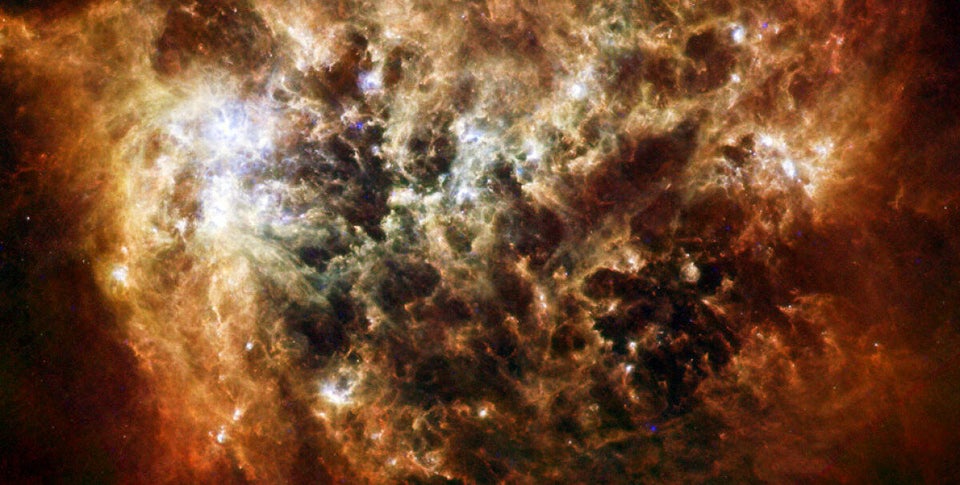You'd be forgiven for not noticing - but our entire solar system is hurtling through space at quite a speed.
Astronomers have long assumed this would mean it would have a 'tail' - much like a meteor or comet - but they have never been able to observe it. Until now.
NASA’s Interstellar Boundary Explorer (IBEX) has mapped the tail and - much to everyone's surprise - has found it is shaped like a four-leaf clover.

The heliotail
David McComas, principal investigator for IBEX, said: "Many models have suggested the heliotail might be like this or like that, but we’ve had no observations.
"We always drew pictures where the tail of the heliosphere just disappears off the page, since we couldn’t even speculate about what it really looked like.
The tail is part of the heliosphere - a bullet shaped bubble around the solar system formed by solar winds and magnetic fields - that drags behind as it moves through space.

Examples of other space 'tails'
Because the sun sends out fast winds of particles from its poles and slower winds from the equator, anyone looking down through the tail would see the characteristic four-leaf clover effect created by streams moving at different speeds.
Additionally, the tail twists slightly the further it gets from the sun as it becomes affected by the magnetic field of the local galaxy.
Although they now know the shape scientists still don't know how long the tail is.

The yellow and red colours represent areas of slow-moving particles, and the blue represents the fast-moving particles
Eric Christian, IBEX mission scientist at NASA’s Goddard Space Flight Centre, said: "The tail is our footprint on the galaxy, and it’s exciting that we’re starting to understand the structure of it.
"The next step is to incorporate these observations into our models and start the process of really understanding our heliopshere."
The tail has been hard to spot up till now as the particles it consists of don't shine so they can’t be seen conventionally.
IBEX uses a process "energetic neutral atom imaging". Nasa explains it best:
This technique... relies on the fact that the paths of neutral particles aren’t affected by the heliosphere’s magnetic fields. The particles travel in a straight line from collision to IBEX. Consequently, observing where the neutral particles came from describes what’s going on in these distant regions.
Christian said: “Using neutral atoms, IBEX can observe far away structures, even from Earth orbit
“And IBEX scans the entire sky, so it has given us our first data about what the tail of the heliosphere looks like, an important part of understanding our place in and movement through the galaxy.”
